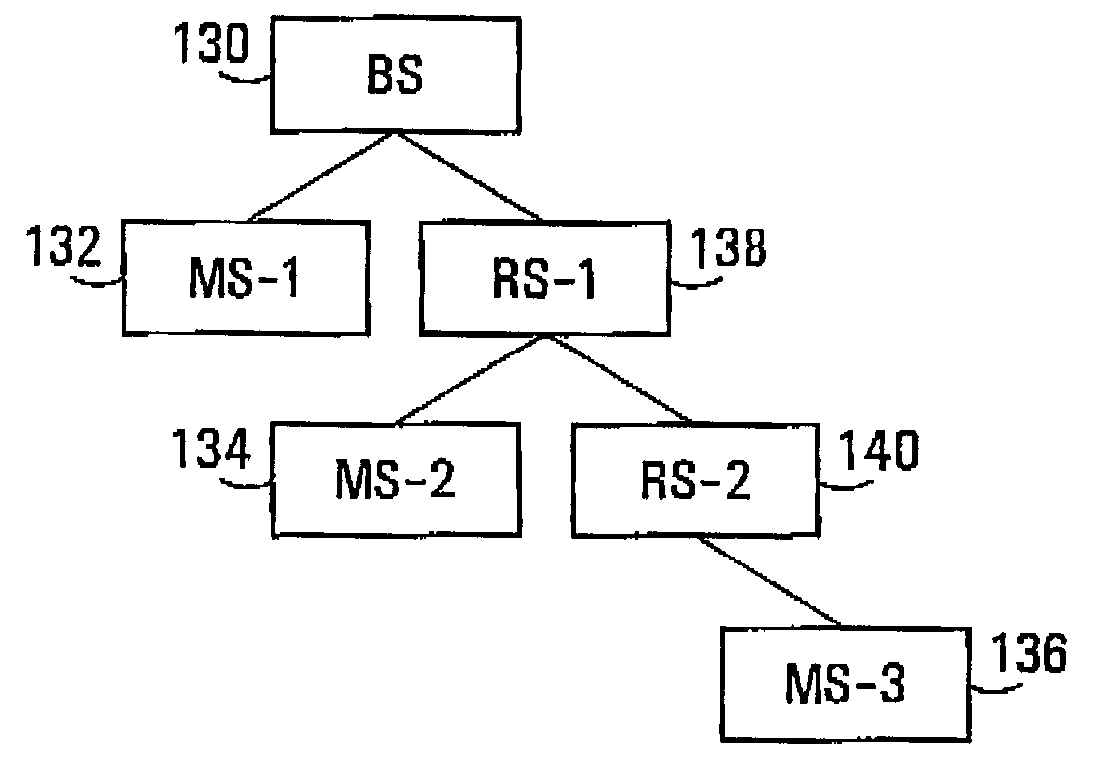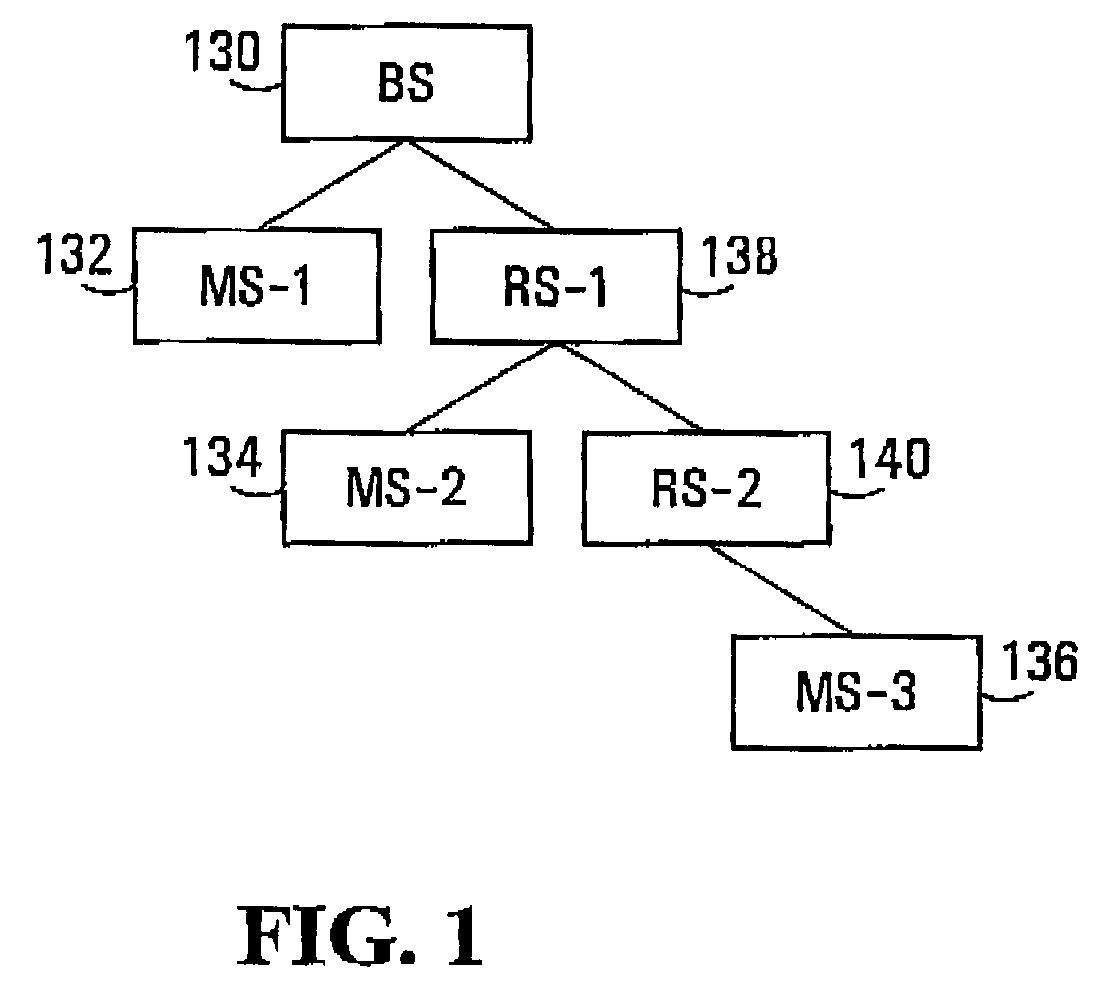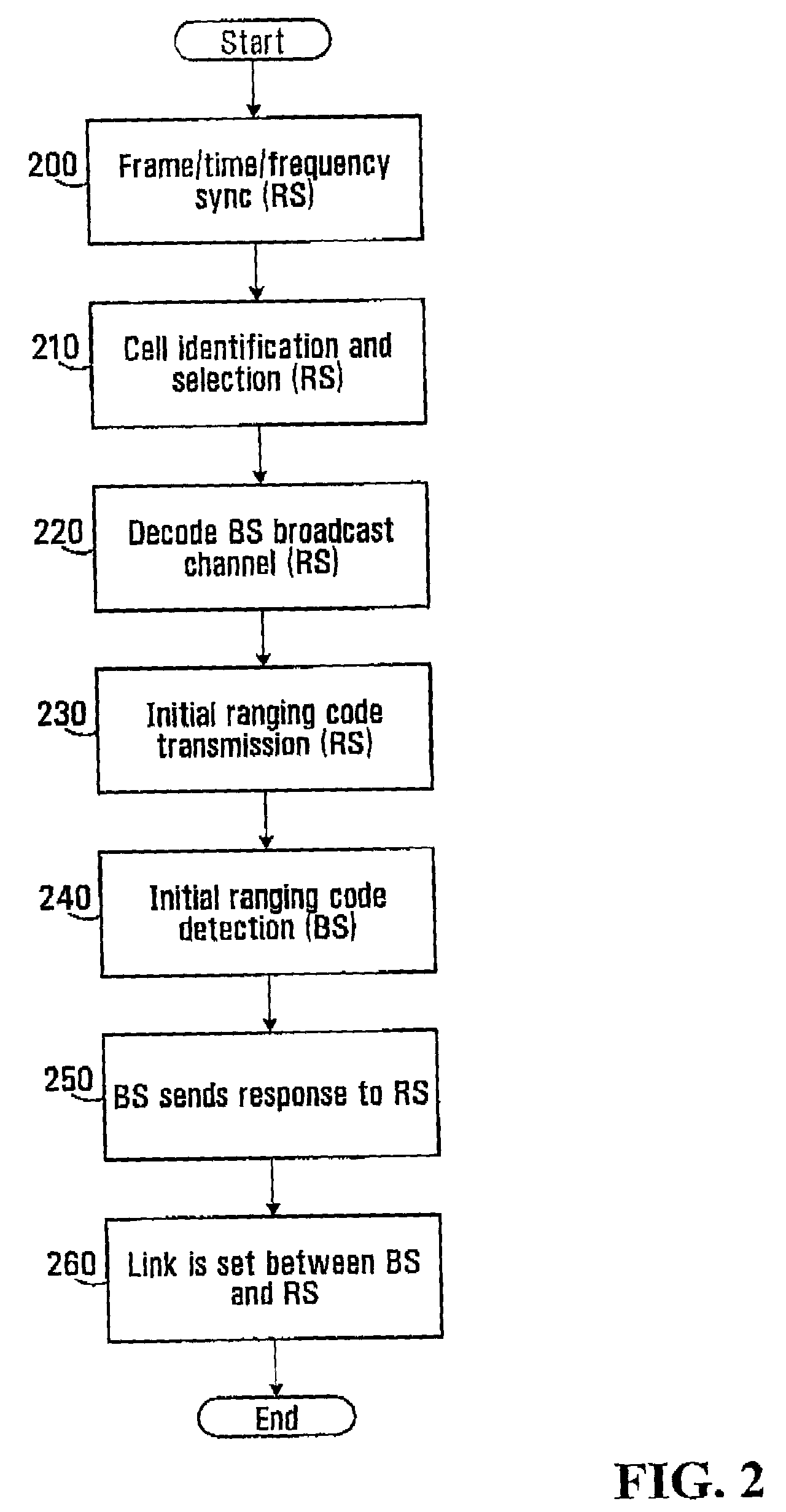Zones for wireless networks with relays
a wireless network and relay technology, applied in the field of wireless communications, can solve the problems of limited data rate and gaps in coverage of the given cell, increased system complexity, spectrum efficiency penalty, etc., and achieve the effect of improving detection performan
- Summary
- Abstract
- Description
- Claims
- Application Information
AI Technical Summary
Benefits of technology
Problems solved by technology
Method used
Image
Examples
first embodiment
Frame Structure with MS / RS Zones—First Embodiment
[0228]In a first embodiment, the allocation of resources is performed in a TDD manner between the UL and DL. Within a TDD frame, there is a DL sub-frame that is only used for downlink transmission (be it from BS to RS, or RS to RS or RS to MS), and a UL sub-frame that is only used for uplink transmission (be it from MS to RS, RS to RS or RS to BS).
[0229]It is assumed that full use sub-carrier utilization is employed meaning that a full set of available sub-carrier frequencies is used. More generally, other sub-carrier to sub-channel permutations are possible.
[0230]A single OFDM band is used for both RS links (between BS and RS as well as RS and RS) and MS links (between BS and MS as well as RS and MS). In this embodiment, the single OFDM band is on a single OFDM carrier.
[0231]In a specific example, within a DL sub-frame, each BS is allocated a DL_RS zone for transmitting to RSs and a DL_MS zone for transmitting to MSs. Each RS is allo...
second embodiment
Frame Structure with MS / RS Zones—Second Embodiment
[0242]In a second embodiment, the allocation of resources is again performed in a TDD manner between the UL and DL. Within a TDD frame, there is a DL sub-frame that is only used for downlink transmission (be it from BS to RS, or RS to RS or RS to MS), and a UL sub-frame that is only used for uplink transmission (be it from MS to RS, RS to RS or RS to BS).
[0243]It is assumed that full use sub-carrier utilization is employed meaning that a full set of available sub-carrier frequencies is used. More generally, other sub-carrier to sub-channel permutations are possible.
[0244]A single OFDM hand is used for both RS links (between BS and RS as well as RS and RS) and MS links (between BS and MS as well as RS and MS). In this embodiment, the single OFDM band is on a single OFDM carrier.
[0245]In a specific example, within a DL sub-frame, each BS is allocated a DL_RS zone for transmitting to RSs and a DL_MS zone for transmitting to MSs. Each RS...
third embodiment
Frame Structure with MS / RS Zones—Third Embodiment
[0257]In a third embodiment, the allocation of resources is again performed in a TDD manner between the UL and DL. Within a TDD frame, there is a DL sub-frame that is only used for downlink transmission (be it from BS to RS, or RS to RS or RS to MS), and a UL sub-frame that is only used for uplink transmission (be it from MS to RS, RS to RS or RS to BS).
[0258]It is assumed that partial use sub-carrier channelization (PUSC) is employed meaning that for some transmissions, a subset of an available OFDM band is employed. For example, in some embodiments the available OFDM band is divided into three parts, and the three parts can be allocated separately. More generally, separation into N parts may be performed. The available OFDM band is divided during the DL sub-frame among the BS and the RSs for transmission to respective MSs and the OFDM band is divided during the UL sub-frame among the BS and the RSs for reception from respective MSs....
PUM
 Login to View More
Login to View More Abstract
Description
Claims
Application Information
 Login to View More
Login to View More - R&D
- Intellectual Property
- Life Sciences
- Materials
- Tech Scout
- Unparalleled Data Quality
- Higher Quality Content
- 60% Fewer Hallucinations
Browse by: Latest US Patents, China's latest patents, Technical Efficacy Thesaurus, Application Domain, Technology Topic, Popular Technical Reports.
© 2025 PatSnap. All rights reserved.Legal|Privacy policy|Modern Slavery Act Transparency Statement|Sitemap|About US| Contact US: help@patsnap.com



